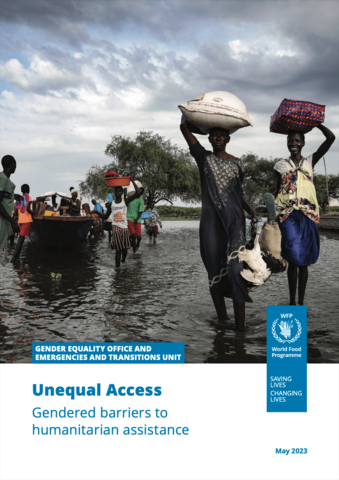
Humanitarian access has two dimensions; the ability of humanitarians to reach populations affected by crisis and the ability of affected populations to access humanitarian assistance. Analyses on humanitarian access have traditionally focused on the former. This has resulted in a limited understanding of the access barriers experienced by diverse women and girls, as well as men and boys.
Building on the evaluations of the World Food Programme’s (WFP) protection and gender policies, WFP Strategic Plan 2022-2025 emphasizes the need to strengthen gender and protection mainstreaming and calls for engagement of diverse groups within communities to inform programmes, with a “focus on identifying barriers to access food and nutrition assistance, as well as the risks to which affected populations are exposed”. Challenges also remain to systematically operationalise gender analyses, participatory approaches and the tailoring of assistance to the needs of all women, girls, men and boys.
This study aims to fill these gaps by identifying the specific barriers and constraints that women and girls, in particular, face when attempting to access WFP assistance in different humanitarian contexts. The study will also propose a set of recommendations, including on best practices from the field.



